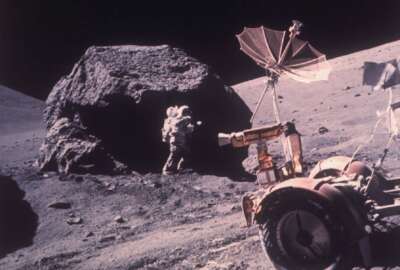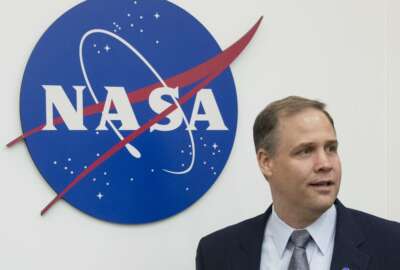
New mission directorate in NASA budget request would explore new capabilities for moon, Mars missions
NASA’s 2020 budget request includes some pretty big projects, including missions to return to the moon and travel to Mars. But projects at that scale will require...
NASA’s 2020 budget request includes some pretty big projects, not least of which are the ongoing mission to return to the moon, and efforts to lay the foundation for a manned mission to Mars. But projects of that scale will require changes to how NASA manages them, NASA Administrator James Bridenstine told the House Appropriations subcommittee on Commerce, Justice, Science and Related Agencies.
“What we’re talking about is creating a new mission directorate at NASA,” Bridenstine said during the March 27 hearing. “And it’s focused on development activities that are very large in scale. And that mission directorate, we would call it Moon to Mars Mission Directorate, because it’s going to be focused on getting to the moon and using those capabilities to go on to Mars. So on the management side we’re trying to separate operations from development so that we can get a better mix of the right people in the right places to accomplish these objectives.”
The problem, Bridenstine said, is that the current division between operations and development is muddled. Operations refers to the actual missions: Flying to and resupplying the International Space Station, for example. Development refers to the design and implementation of never-before-used technologies.
And this doesn’t refer to the development that’s happening amidst commercial crew operations, Bridenstine said. NASA is taking advantage of the commercialization of space capabilities to enable itself to expand into other, unexplored capabilities. For example, NASA wants to start studying the possibility of harvesting lunar ice to use for hydrogen-and-oxygen-based rocket fuels for a mission to Mars.
NASA hopes that becoming a customer of private space-flight companies, rather than an owner of hardware, will create competition that will lower the costs of traditional space-flight missions and drive innovation in those spaces. It then wants to use those saved resources to expand into areas where no commercialization yet exists.
But that will require a more clear distinction in the management of the operations and development aspects of space exploration. While operations turns more toward commercialization, development can expand the art of the possible.
Inspiring future generations
Related Stories
Bridenstine said that supporting STEM education is a priority for NASA, but the agency’s focus on that front is occurring within the specific mission directorates, which sponsor and partner with programs directly related to their purview. He outlined one example of how that can work.
“We engage through the Science Mission Directorate an organization called FIRST Robotics, and that gets young people – we’re talking about high schoolers – building robots and competing in competitions and inspiring that next generation,” Bridenstine said. “And I just went out to a robotics competition and had the opportunity to speak to a bunch of young kids. They’re building things that are absolutely magnificent. And of course they’re reaching out to young girls and communities that are not represented well in the STEM fields. And so we support that effort in those areas and we will absolutely continue to do that work with the Mission Directorates on internships and those activities. So all through the education process we’re trying to engage kids at all different levels.”
He also noted that the agency has been working to create more opportunities for women and minorities to work for NASA, particularly in STEM fields, but gave no specifics on what those efforts entail.
Improving enhanced use lease agreements
Another area where Bridenstine said NASA has found success in public-private partnerships is its enhanced use lease agreements. These allow NASA to rent out under-utilized space to private companies. That could range anywhere from renting land for housing, to test stands for private companies to experiment with rocket propulsion, to renting unused office space in buildings.
Sometimes, in fact, the agreements require the tenant to make improvements to the facilities, which can guarantee NASA will have that facility to take advantage of for the next 20 to 40 years.
The problem is that program expires every year. Bridenstine said the uncertainty of funding, plus the occasional threat of a lapse in appropriations, can dissuade companies from taking advantage of this program.
Rep. Steven Palazzo (D-Miss.) said he’s working on a solution to that.
“We’re working on legislation to try to make the EUL longer, because as you know, the expiration is almost a lot like flood insurance. People want the certainty of a program being in place for a long time but if it’s expiring every six months, every year, every two years, I don’t think we’re fully utilizing the commerce, the industries that would seek out NASA facilities in the joint ventures and the partnerships,” Palazzo said.
Copyright © 2025 Federal News Network. All rights reserved. This website is not intended for users located within the European Economic Area.
Daisy Thornton is Federal News Network’s digital managing editor. In addition to her editing responsibilities, she covers federal management, workforce and technology issues. She is also the commentary editor; email her your letters to the editor and pitches for contributed bylines.
Follow @dthorntonWFED




